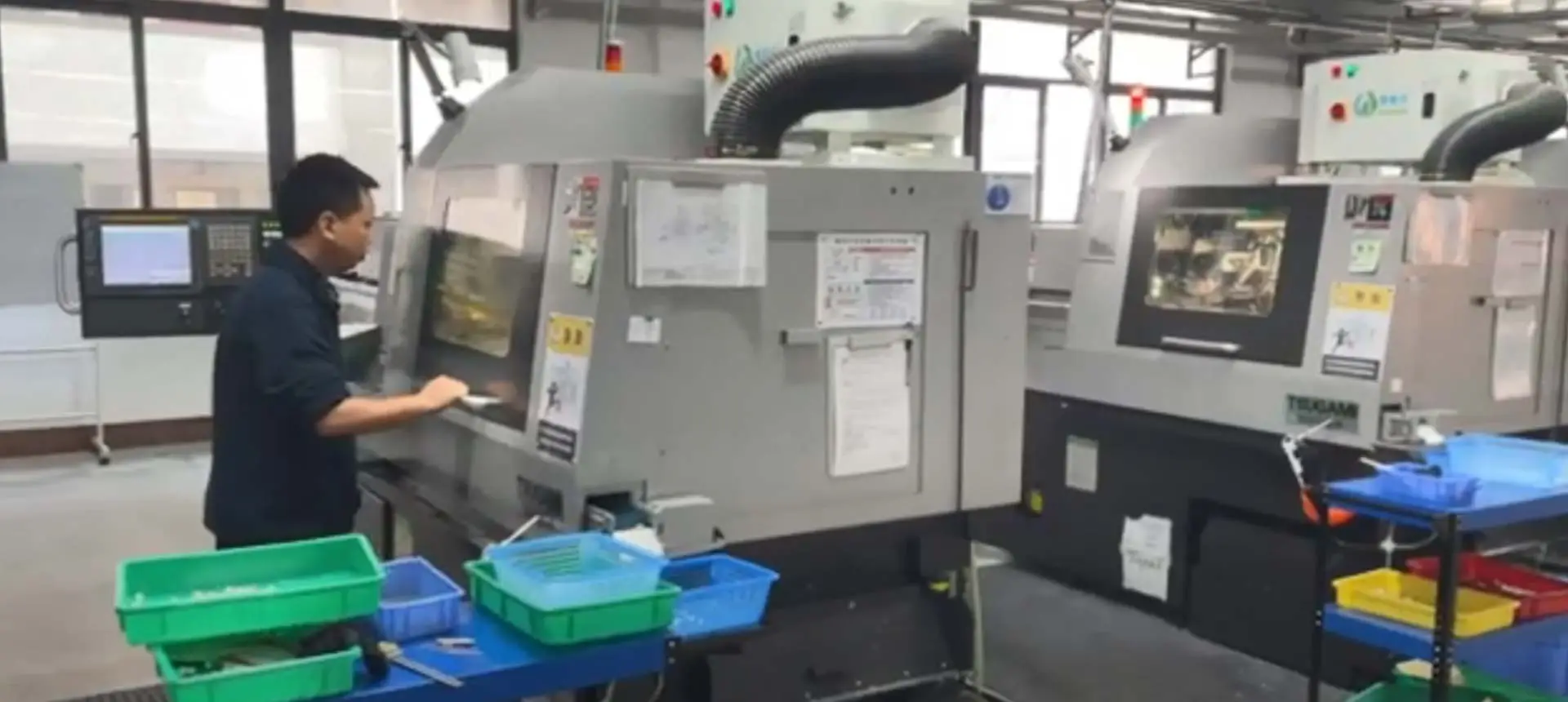
In unserem Unternehmen verwenden wir einen hoch effizienten Prozess, um CNC-Bearbeitungs teile herzustellen, die die spezifischen Anforderungen unserer Kunden erfüllen. Hier ist ein Überblick über den Prozess, dem wir folgen:
Design und Programmierung: Unsere erfahrenen Ingenieure arbeiten mit der neuesten Software, um das Teil zu entwerfen und zu programmieren, um sicher zustellen, dass es die erforderlichen Spezifikationen und Toleranzen erfüllt.
Material auswahl: Wir wählen sorgfältig das geeignete Material für das Teil aus, unter Berücksichtigung seiner Festigkeit, Haltbarkeit und anderer Eigenschaften.
CNC-Bearbeitung: Wir verwenden fortschritt liche computer gesteuerte Maschinen, um den CNC-Bearbeitungs prozess durch zuführen, bei dem übers chüssiges Material vom Werkstück entfernt wird, um die endgültige Form des Teils zu erzeugen.
Qualitäts prüfung: Unser Team inspiziert die Teile in jeder Phase des Prozesses mit der neuesten Technologie und Ausrüstung, um sicher zustellen, dass jedes Teil die erforderlichen Qualitäts standards erfüllt.
Finishing: Wir bieten eine Reihe von Finishing-Optionen, einschl ießlich Sandstrahlen, Polieren, Eloxieren und Beschichtung, um das Aussehen und die Funktional ität der Teile zu verbessern.
Verpackung und Versand: Wir verpacken die Teile sorgfältig, um ihre sichere Ankunft zu gewährleisten, und liefern sie umgehend an unsere Kunden.
Mit unserem Engagement für Qualität, Effizienz und Kunden zufriedenheit haben wir uns einen Ruf als vertrauens würdiger Anbieter von kunden spezifischen CNC-Bearbeitungs teilen erarbeitet. Wenn Sie ein Projekt haben, das hochwertige CNC-Bearbeitungs teile erfordert, kontaktieren Sie uns bitte, um Ihre Anforderungen zu besprechen und wie wir helfen können.
Beschreibung | CNC-Fräsen | CNC-Drehen |
Materialien | Aluminium/Cu/Stahl/Edelstahl | Aluminium/Cu/Stahl/Edelstahl |
Maximale Teile größe | 1000mm * 1000mm * 600mm | 1000mm * 600mm * 600mm |
Standard-Vorlaufzeit | 4 Werktage | 4 Werktage |
Toleranz (± mm) | Nur Fräsen: Bis zu ± 0,025mm Mit Drahts ch neiden oder EDM: Bis zu 0,002mm | Bis zu ± 0,0025mm |
Qualitäts sicherung | ISO 9001, ISO 45001:2018 Lieferanten-Audits CMM und 2D Mess projektor Inspektions berichte Funktionale Inspektion Custom Probenahme | ISO 9001, ISO 45001:2018 Lieferanten-Audits CMM und 2D Mess projektor Inspektions berichte Funktionale Inspektion Custom Probenahme |
Hohe Präzision und Genauigkeit: Mit der CNC-Bearbeitung können Teile mit extrem engen Toleranzen und hoher Genauigkeit hergestellt werden, was eine Konsistenz bietet, die mit manuellen Bearbeitungs prozessen nur schwer zu erreichen ist.
Breite Palette von Materialien: CNC-Bearbeitung kann mit einer Vielzahl von Materialien verwendet werden, einschl ießlich Metall, Kunststoff, Holz und Verbund werkstoffe.
Kosten günstig für die Großserien produktion: Die CNC-Bearbeitung ist ideal für die Großserien fertigung, da sie die Herstellung großer Teile mengen zu geringeren Kosten pro Stück ermöglicht.
Erhöhte Effizienz: Aufgrund der automat isierten CNC-Bearbeitung kann die Produktion effizienter durchgeführt werden, ohne dass manuelle Eingriffe erforderlich sind, was zu schnelleren Produktions zeiten führt.
Vielseitigkeit: Die CNC-Bearbeitung kann verwendet werden, um komplexe Komponenten mit komplizierten Formen und Geometrien herzustellen, wodurch sie für eine Vielzahl von Anwendungen geeignet ist.
Im Bereich der Präzisions fertigung ist die CNC-Bearbeitung (Computer Numerical Control) ein techno logisches Wunder, das die Produktions industrie revolution iert hat. Bei der CNC-Bearbeitung werden Computers ysteme zur Steuerung von Werkzeug maschinen und-prozessen verwendet, die eine hochgenaue und effiziente Herstellung von komplizierten Teilen und Komponenten ermöglichen. Die verschiedenen CNC-Bearbeitungs prozesse unter HHC haben unterschied liche Anwendungs bereiche und Verarbeitung eigenschaften. Das Folgende bietet eine detaillierte Klassifizierung und Einführung.
Das Fräsen ist eine der häufigsten Arten der CNC-Bearbeitung und verwendet rotierende Schneidwerk zeuge, um Material von einem Werkstück zu entfernen. Die Fräsmaschine kann sich entlang mehrerer Achsen bewegen und eine Vielzahl von Formen, Schlitzen und Löchern erzeugen. Von einfachen Komponenten bis hin zu komplexen Prototypen ist das Fräsen vielseitig und in Branchen wie Luft-und Raumfahrt, Automobil und Elektronik weit verbreitet.
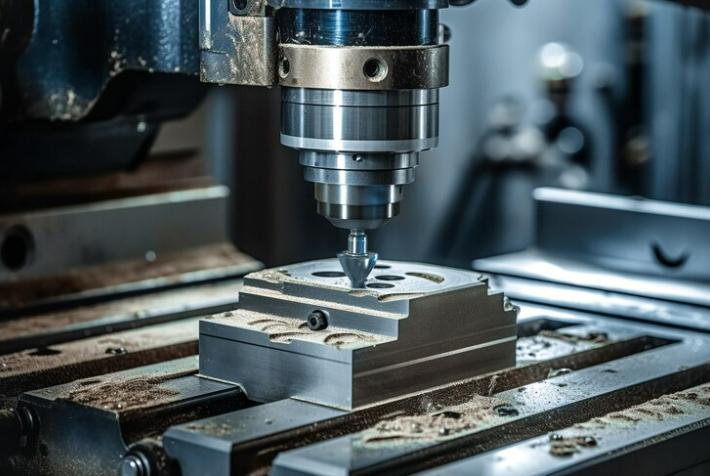
Bei Dreh vorgängen dreht sich das Werkstück, während ein Schneidwerk zeug es in die gewünschte Form formt. Diese Art der CNC-Bearbeitung ist ideal für die Herstellung von zylindrischen Komponenten wie Wellen, Bolzen und Spindeln. Das Präzisions drehen ist ein Eckpfeiler der Herstellungs prozesse und bietet Effizienz und Genauigkeit für verschiedene Anwendungen.
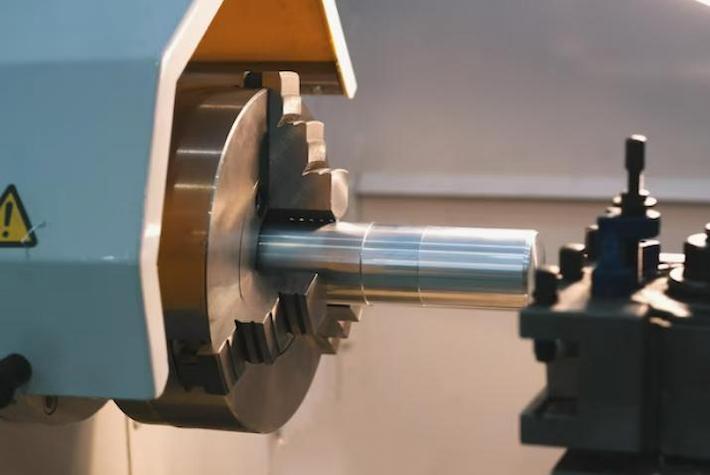
Wie der Name schon sagt, sollen CNC-Bohrmaschinen Löcher in Werkstücken erzeugen. Diese Maschinen verwenden rotierende Bohrer, um Material zu entfernen, und sie sind entscheidend für die Herstellung von Komponenten, die präzise und gleichmäßige Löcher erfordern. Branchen wie Bauwesen, Metall bearbeitung und Elektronik sind für ihre Fertigungs anforderungen stark auf CNC-Bohrungen angewiesen.
Wenn extreme Präzision und Oberflächen beschaffenheit von größter Bedeutung sind, kommt das CNC-Schleifen ins Spiel. Diese Methode verwendet Schleif scheiben, um Material zu entfernen und enge Toleranzen zu erreichen. Das CNC-Schleifen ist bei der Herstellung von Werkzeugen, Formen und hochpräzisen Komponenten für medizinische Geräte und die Luft-und Raumfahrt technik unverzicht bar.
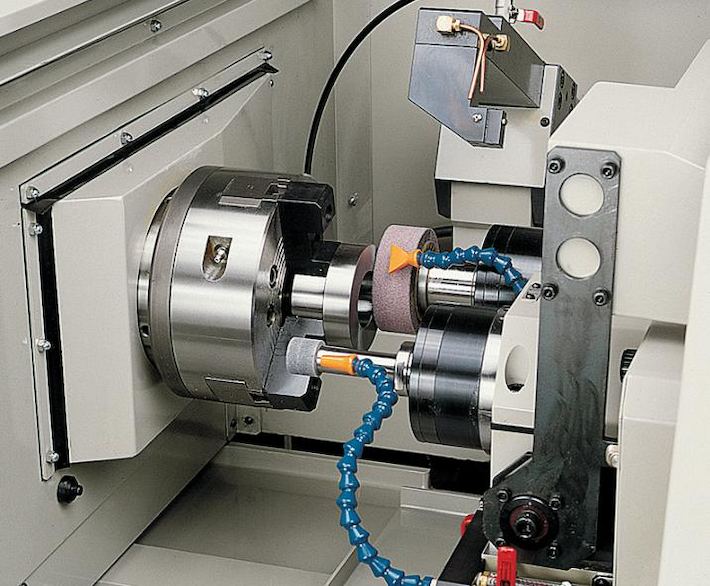
EDM ist eine nicht traditionelle CNC-Bearbeitungs methode, bei der elektrische Entladungen verwendet werden, um Materialien zu formen. Durch sorgfältig kontrollierte elektrische Funken kann EDM komplizierte und komplexe Formen mit hoher Präzision erzeugen. Diese Technik ist besonders nützlich für Hartmetalle, die mit herkömmlichen Methoden schwierig zu bearbeiten sind. Zum Beispiel verwenden wir die elektrische Entladung bearbeitung (EDM), um Vorlagen für Formen anzupassen
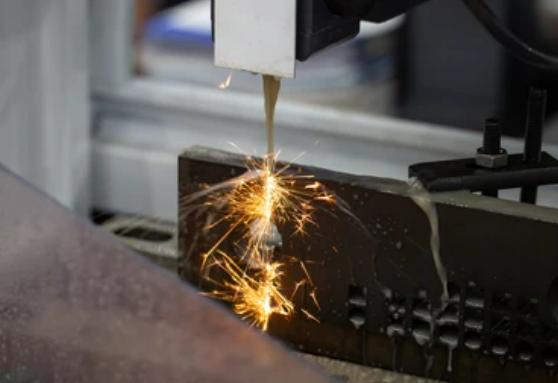
Beim CNC-Lasers ch neiden wird ein Laserstrahl verwendet, um Materialien zu durchschneiden und präzise und saubere Kanten zu erzeugen. Diese Methode wird häufig bei der Herstellung von Blech komponenten für Branchen von der Automobili ndustrie bis zur Unterhaltung elektronik eingesetzt. Die hohe Präzision und Geschwindigkeit macht das CNC-Lasers ch neiden zu einem unschätzbaren Prozess in der modernen Fertigung.

In der sich ständig weiterentwickeln den Fertigungs landschaft haben sich zwei Spitzen technologien als Spitzenreiter heraus gestellt: CNC-Bearbeitung und 3D-Druck. Jede Methode bringt ihre eigenen Stärken und Anwendungen auf den Tisch. Lassen Sie uns die Feinheiten der CNC-Bearbeitung und des 3D-Drucks untersuchen und deren Merkmale, Vorteile und Einschränkungen vergleichen.
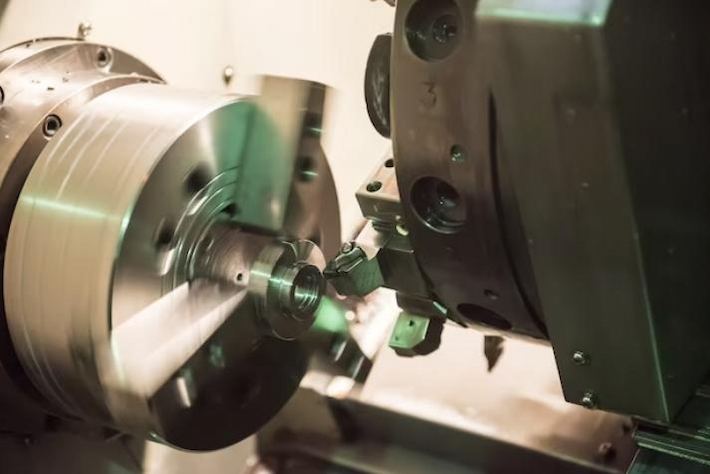
Die CNC-Bearbeitung (Computer Numerical Control) ist ein sub trakt iver Herstellungs prozess. Dabei wird Material von einem Werkstück entfernt, um die gewünschte Form zu erreichen. Dieser Prozess verwendet computer gestützte Konstruktion software (CAD) und computer gestützte Fertigungs software (CAM), um die Bewegung von Schneidwerk zeugen genau zu steuern.
Die CNC-Bearbeitung ist bekannt für ihre hohe Genauigkeit und Präzision. Es kann enge Toleranzen erreichen und komplizierte Details erzeugen, was es für Anwendungen geeignet macht, bei denen Präzision von größter Bedeutung ist, wie z. B. die Luft-und Raumfahrt-und Medizin industrie. Die CNC-Bearbeitung ist vielseitig, wenn es um Material verträglich keit geht. Es kann mit einer Vielzahl von Materialien umgehen, einschl ießlich Metallen, Kunststoffen und Verbund werkstoffen. Dies macht es zu einer bevorzugten Wahl für Branchen, die Haltbarkeit und Festigkeit in ihren Komponenten fordern. Die CNC-Bearbeitung eignet sich sowohl für das Prototyping als auch für die Groß produktion. Während die Einrichtungs zeit für die CNC-Bearbeitung länger sein kann als für den 3D-Druck, zeichnet sie sich durch die Herstellung hochwertiger, funktions fähiger Teile aus. Die CNC-Bearbeitung bietet eine überlegene Oberflächen beschaffenheit im Vergleich zu vielen 3D-Drucktechnologien. Dies macht es zu einer idealen Wahl für Komponenten, die eine polierte oder glatte Oberfläche benötigen.
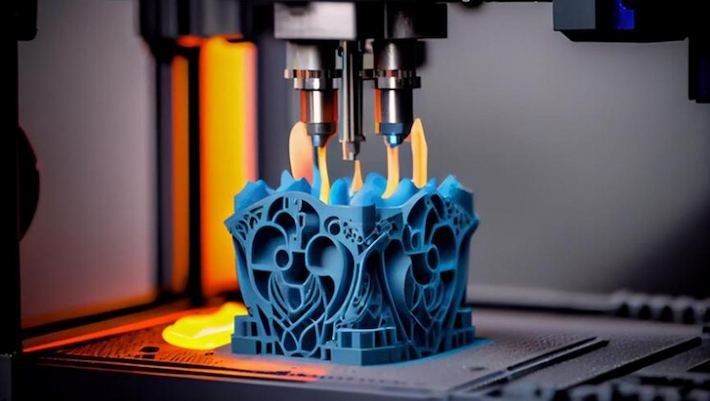
3D-Druck oder additive Fertigung baut ObjekteSchicht für Schicht aus einem digitalen Modell. Dabei wird Material in einem bestimmten Muster abgelagert, um ein drei dimensionales Objekt zu erstellen. Dieser Prozess ist sehr vielseitig und ermöglicht komplizierte Geometrien.
Der 3D-Druck unterstützt eine Vielzahl von Materialien, darunter Kunststoffe, Metalle, Keramiken und sogar Bio materialien. Die Material auswahl nimmt weiter zu und eröffnet verschiedenen Branchen neue Möglichkeiten. Der 3D-Druck zeichnet sich durch Rapid Prototyping aus und eignet sich gut für komplexe Geometrien, die für die CNC-Bearbeitung eine Herausforderung darstellen können. Es entspricht jedoch möglicher weise nicht der Geschwindigkeit der CNC-Bearbeitung für die Groß produktion. In Bezug auf die Wirtschaft lichkeit, insbesondere für die Produktion und das Prototyping in geringem Volumen, kann der 3D-Druck aufgrund reduzierter Material verschwendung und einfacherer Einstellungen Vorteile bieten. Der 3D-Druck wird für seine Anpassungs möglichkeiten gefeiert. Es ermöglicht die Erstellung einzigartiger, personal isierter Designs, ohne dass zusätzliche Werkzeuge erforderlich sind, was es ideal für die Einzel-oder Kleinserien produktion macht.
Insgesamt hängt die Wahl zwischen CNC-Bearbeitung und 3D-Druck von Faktoren wie Materialien, Präzisions anforderungen, Produktions maßstab und Projekt komplexität ab. Bei größeren Produktions läufen zeichnet sich die CNC-Bearbeitung durch Präzision und Material vielseitigkeit aus, während der 3D-Druck in Rapid Prototyping und komplexen Design anwendungen glänzt.
Kationen.
Die CNC-Bearbeitung (Computer Numerical Control) spielt eine entscheidende Rolle bei der Herstellung hochwertiger Präzisions komponenten. Im Folgenden sind die allgemeinen Prozess schritte und Details für die Herstellung von CNC-bearbeiteten Flanschen aufgeführt:
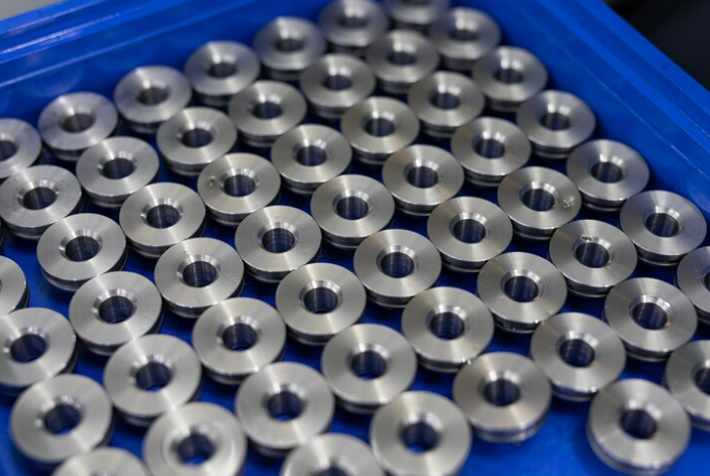
Prozess schritte für CNC-bearbeitete Flansche:
1. Design und Modellierung:
Vor der Herstellung von CNC-Komponenten ist das CAD-Design (Computer-Aided Design) unerlässlich. Konstrukteure verwenden CAD-Software, um ein 3D-Modell des Flansches zu erstellen und geometrische Formen, Abmessungen und Bearbeitungs wege zu bestimmen.
2. Material Vorbereitung:
Wählen Sie geeignete Rohstoffe, typischer weise Metalle (wie Edelstahl, Aluminium usw.). Die Material auswahl hängt vom Zweck des Flansches, der Arbeits umgebung und den Leistungs anforderungen ab.
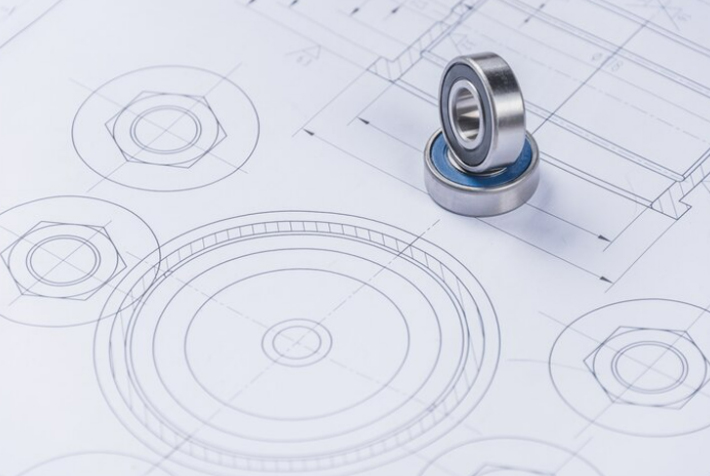
3. Bearbeitungs prozesse:
A. Rough ing:
Verwenden Sie Schneidwerk zeuge auf CNC-Maschinen, um Schruppen durch zuführen und die Gesamtform des Werkstücks grob zu formen.
Das Ziel des Schürens ist es, übers chüssiges Material schnell zu entfernen und eine ungefähre endgültige Form zu hinterlassen.
B. Halb finishing:
Verwenden Sie verschiedene Werkzeuge, um das Werkstück halb fertig zustellen, und nähern Sie sich der endgültigen Form.
Reduzieren Sie die Schnitt geschwindigkeit, um die Oberflächen glätte zu verbessern.
C. Veredelung:
Verwenden Sie kleine Werkzeuge für den endgültigen Präzisions schnitt, um die endgültigen Abmessungen und die Oberflächen glätte zu erreichen.
Bei der End bearbeitung werden häufig kleinere Werkzeuge verwendet, um die Bearbeitungs präzision zu verbessern.
D. Loch bearbeitung und Gewinde schneiden:
Verwenden Sie spezielle Werkzeuge für die Loch bearbeitung und das Gewindes ch neiden, um sicher zustellen, dass der Flansch den Konstruktion spezifikationen entspricht.
4. Inspektion und Qualitäts kontrolle:
Führen Sie nach jedem Bearbeitungs schritt Inspektionen durch, um sicher zustellen, dass die Abmessungen, die Form und die Oberflächen qualität des Werkstücks den Spezifikation sanford rungen entsprechen. Übliche Inspektions methoden umfassen Koordinaten messung, Oberflächen rauheit prüfung und Ultraschall prüfung.
5. Oberflächen behandlung:
Führen Sie je nach Anforderung Oberflächen behandlungen wie Polieren, Sandstrahlen oder Beschichten durch, um das Erscheinung sbild und die Korrosions beständigkeit zu verbessern.
6. verpackung und Lieferung:
Nach Abschluss der Bearbeitung und Inspektion verpacken Sie die Flansche entsprechend den Kunden anforderungen und fahren Sie mit der Lieferung fort.
Die CNC-Bearbeitung (Computer Numerical Control) ist ein Herstellungs prozess, bei dem vorprogramm ierte Computers oftware die Bewegung von Maschinen und Werkzeugen steuert. Dieses Verfahren ermöglicht die Herstellung hochpräziser und komplexer Teile aus verschiedenen Materialien, einschl ießlich Metallen und Kunststoffen. CNC-Bearbeitung ist in Branchen wie Automobil, Elektronik und Luft-und Raumfahrt weit verbreitet.
Das CNC-Drehen ist ideal für die Herstellung von zylindrischen oder runden Teilen wie Wellen, Buchsen, Schrauben und Stiften. Es wird häufig für Komponenten verwendet, die hohe Präzision und glatte Oberflächen erfordern. Branchen wie Automobil, Medizin und Elektronik profitieren vonChina Aluminium drehte ile.
Suchen Sie nach einem Lieferanten mit umfassender Erfahrung, moderner Ausrüstung und einem starken Engagement für die Qualitäts kontrolle. Zertifizie rungen wie ISO 9001 und IATF 16949 weisen auf die Einhaltung der Industries tandards hin. Berücksichtigen Sie auch Faktoren wie Produktions kapazität, Vorlaufzeiten und Kunden bewertungen.
Bei HHC bieten wir Präzisions teile mit Toleranzen von ± 0,01mm an, um selbst für die komplexesten Komponenten eine hohe Genauigkeit zu gewährleisten. Unsere fortschritt liche Ausrüstung ermöglicht es uns, die Konsistenz aufrecht zu erhalten und die spezifischen Anforderungen jedes Projekts zu erfüllen.
Die Vorlaufzeiten variieren je nach Komplexität und Menge der Teile. In der Regel liefern wir jedoch CNC-Bearbeitungs teile innerhalb von 1 bis 4 Wochen. Wir bieten auch beschleunigte Dienstleistungen für dringende Projekte an, um unseren Kunden zu helfen, enge Fristen einzuhalten.


